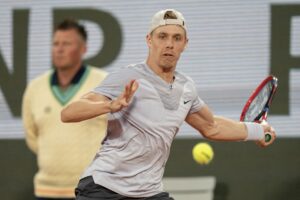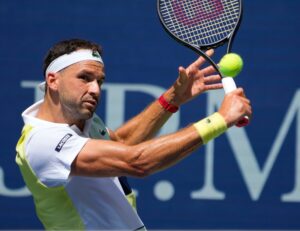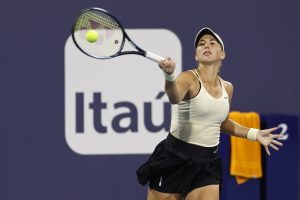When it comes to naming “famous” tennis tournaments, tennis fans around the world know the drill. Naturally, the four Grand Slams form the bulk of the list of well-known tournaments, followed perhaps by Indian Wells, Monte Carlo, and the season-ending WTA or ATP tour finals. Few would think that a tournament that alternates between two locations every year could possibly be on the list of famous tennis tournaments. But then, that is exactly what makes The Rogers Cup unique, and omitting it from a list of “famous” tournaments would be tennis blasphemy. This is a tournament that overcomes cultural and linguistic adversity to maintain itself as one of the most important and prestigious tournaments on the tennis calendar.
Established in 1881 on the men’s side, and in 1892 on the women’s side, the Rogers Cup is the third-oldest tournament in the tennis calendar. Only Wimbledon and the US Open can boast older dates of inception than the tournament organised by Tennis Canada. It splits the men’s and women’s tournaments between Montreal and Toronto, and these alternate every year. This year, the men’s tournament is being held in the city at the heart of Francophone Canada (where it is referred to as the “Coupe Rogers”), whereas the women’s tournament is taking to the Anglophone metropolis that is Toronto. Traditionally scheduled in early August, the tournament offers the perfect preparation for the US Open, as well as a test of player resilience after what has, no doubt, been a tough clay and grass court season. The two cities provide the perfect cosmopolitan backdrop to a tournament that has consistently provided tennis fans with some of the best tennis of the year, and this year looks to be no different.
The Women’s Draw
Since Serena Williams’ break from tennis, two different female players in Jelena Ostapenko and Garbine Muguruza have won the next two Grand Slams, and two other players in Angelique Kerber and Karolína Plíšková claimed the #1 spot. All four of the aforementioned players will feature at the Rogers Cup, with Plíšková headlining the top half of the draw, alongside the likes of Kerber, Agnieszka Radwanska, and Petra Kvitova. This half of the draw will also feature home favourite, Eugenie Bouchard. “Genie,” as she is often referred to by her fans, will be looking to improve on what has been another disappointing year for her so far, and a wildcard to this tournament might just give her that extra bit of confidence that she needs. The bottom half of the women’s draw is also pretty open. Defending champion Simona Halep could face hard-hitting American Madison Keys in the second round, with Keys having just beaten Muguruza and Coco Vandeweghe on the way to claiming the title in Stanford this past weekend. Anything can happen in the women’s tournament this year, and one cannot rule out current world #2 Kerber, or the likes of Caroline Wozniacki to have a good run in the tournament. Both of these players prefer hard courts, so this could be their chance to win what would be the biggest title of their respective years so far.
It is difficult, if not impossible, to call a winner at this stage. Nonetheless, gut instinct does seem to suggest that Karolína Plíšková has the edge over her rivals. Her big serve and hard-hitting will work well on the hard courts of the Aviva Centre, and as long as she does not let the added weight of being world #1 get to her, the title should be hers to lose.
The Men’s Draw
Focus on the men’s side of the tournament has, thus far, centred more on who will not be playing in “The Coupe Rogers” this year, as opposed to the tournament’s actual top seeds. In addition to Andy Murray and Novak Djokovic’s absence, Stan Wawrinka pulled out of the tournament, and the rest of the year, with a knee injury. Even with these famous absentees, however, the men’s line-up is pretty stellar. Rafael Nadal heads the draw, with Roger Federer (who, incidentally, has never won the title in Montréal) seeded at #2. The prospect of a Federer/Nadal final will surely get tennis fans around the world excited, especially as both players will be looking to capitalise on the lack of other experienced Grand Slam champions in the draw. That is not to say that the rest of the draw is bad, in any case. Young stars Alexandr Zverev and Dominic Thiem feature, with Zverev coming back off a memorable win in the Citi Open in Washington this weekend. There is also a possibility that this tournament will give the “nearly” men in tennis a chance to shine. Milos Raonic, Grigor Dimitrov, and Kei Nishikori are all men who have previously shown Grand Slam-winning potential, but they have never quite lived up to fans’ expectations. Let’s see if a more open draw will benefit them.
It is difficult to see past the two tennis behemoths that are Federer and Nadal when calling the winner of this tournament. One has to assume that if both these men are fully-fit, then they will meet in the final. If were to be the case, then Federer has the edge over Nadal. However, for variety’s sake, Alexandr Zverev seems like the player with the best hard-court form going into the tournament. Zverev could be a surprise winner at the Stade Uniprix come August 13th , if either Federer or Nadal slip up on the way.





